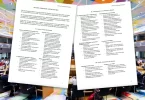(eTN) – October 12, 2012 marks the 10th anniversary of the Bali bombing, one of the world’s most deadly terrorist attacks targeting tourists. The anniversary has special resonance for Australians. Of the 202 people killed in the attack on the Sari Club and Paddy’s Bar in Kuta Beach from 23 countries, 88 of the dead were from Australia. Today, Australian Prime Minister Julia Gillard, former Prime Minister John Howard, and Opposition leader Tony Abbot will join hundreds of survivors, families of victims, and many of those involved in the rescue and rehabilitation of victims in a commemoration ceremony at the site of the attack.
The Australian media appropriately has run extensive coverage of human interest stories featuring the impact of the attack on Australian tourists who either experienced the attack or who were affected by it. For Australians especially, the Bali bombing marked a loss of innocence about the presumed warm welcome they expected to receive when traveling abroad.
The Bali bombing had many ramifications for the tourism industry in Indonesia especially but well beyond. For Bali, the attack ripped the heart out of the island’s tourism industry. In 2002, over 40% of the working population was employed directly or indirectly by the tourism industry. In the aftermath of the bombing, international tourism arrival to Bali plummeted. The attack exposed shortcomings in security, medical infrastructure, and emergency management, many of which were exposed by the Bali Bombing Taskforce report, which was produced by the Pacific Asia Travel Association in 2003. During the weeks following the Bali bombing, fears of similar Islamist attacks in SE Asia led to heightened travel advisories which affected Indonesia, Malaysia, Singapore, the Philippines, and Thailand. In fact, so great was the concern of SE Asian governments about negative travel advisories that the Association of SE Asian Nations (ASEAN) convened a heads-of-state meeting in Cambodia on November 4, 2002 just three weeks after the Bali bombing in which the ASEAN leaders called for an urgent review on travel advisories directed to SE Asian countries issued by Western governments. This meeting also resolved that ASEAN countries would more actively cooperate in the regional tourism marketing of SE Asia, which would be turn out to be very fortuitous when SE Asian countries were forced to confront the common threat to its tourism industries of the SARS outbreaks a few months after the Bali bombing.
PATA worked closely with the Balinese tourism authorities and the Indonesian government to develop a recovery program for Balinese tourism although it took well over a year following the 2002 bombing for tourism to show strong signs of recovery. The challenge was to restore the reputation of Bali as a safe and tourism welcoming destination for tourists. In the year following the 2002 bombing, Bali hosted many travel writers and travel agent familiarization visit from its key source markets.
One of the most important outcomes from a tourism industry perspective of the Bali bombing was the heightened profile of government travel advisories. The timing of the Bali Bombing coincided with the exponential growth of the Internet and the governments of key tourism generating countries such as Japan, South Korea, USA, and Canada. EU countries and Australia took advantage of the Internet as a cost-effective means to distribute and publicize their travel advisories.
In Australia, the government which was heavily criticized by the media for its alleged “failure” to predict the Bali bombing and appropriately warn Australian travelers, reached out to the Australian travel industry to assist in disseminating travel advisories. This led in June 2003 to Australia becoming the first country in the world to establish a working agreement between its Department of Foreign Affairs and Trade and the leadership of key Australian outbound travel industry associations to cooperate and consult with each other on the effective dissemination of travel advisories. The agreement has proven over nearly ten years to be beneficial to both DFAT and the Australian travel industry. One area of disagreement during much of that period has been over the Australian travel advisory as it applied to Indonesia. The Bali bombing was clearly politically traumatic for the Australian government, and it took many years for DFAT to downgrade the level of its travel advisory to Indonesia despite the act that Australian travelers ultimately returned in large numbers to Bali even after the suicide bombing attacks of 2005.
Ten years after the Bali bombing, only three countries in the world – Australia, the UK, and Canada – have ongoing consultative bodies on travel advisories between their national tourism industry leadership and their respective foreign ministries, but expanding such agreements will benefit both the quality and accuracy of travel advisories for the benefit of governments and travelers.
The global travel industry has learned many lessons about risk and crisis management as a result of the Bali bombing and the plethora of crisis events in the ten years since, and it is to the credit of key trans-national tourism bodies including the UNWTO, WTTC, PATA, ASEAN Tourism, and APEC that the travel industry is at a far higher state of preparedness for crisis events in 2012 than it was in 2002. However, the 10th anniversary of the Bali bombing is a salutary reminder that the industry can never drop its guard.






















